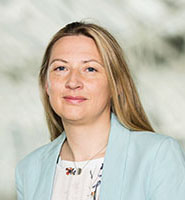Digital by law

Irish-born Heather Broomfield is a senior advisor in Norway’s DIFI Agency which is responsible for public management and e-government and she spoke at the recent eolas digital government conference.

Heather Broomfield comes to Dublin fresh from the launch of the Norwegian Government’s ‘Digital Agenda’ three weeks previously. Founded in 2008, DIFI is the Government agency responsible agency for reforming and developing the public sector. The agency has 250 employees, split between Oslo and Leikanger, which is a five-hour drive from the capital. “Norwegian digital service can be five hours away because we are a completely digital service and it is important that people live throughout the country and we are decentralised. We are not going to achieve digital government unless public management understand digital and understands the benefits it offers,” observes Broomfield.
Norway is a vast country geographically with an ageing population of 5 million citizens. With such a dispersed population Broomfield says: “We need a digital government to enable us where we want to live in Norway.” It also has a huge public sector with 700,000 employees, nearly all healthcare services publically delivered and most childcare also provided by the public sector. This is coupled with very demanding citizens with very high use of smartphones and tablets and very high daily internet usage. Although Broomfield says that Norwegians can be very demanding, 65 per cent of citizens are satisfied with the work of the state.
The first phase of digital development focused on common e-government components that are “the building blocks that the public sector can use to build their services on.” Four of the components are shared data: national population register, property register, a central register for legal entities and the electronic contact register. The additional three components are shared services: Digital Mailbox, Altinn and eID Gateway.
The first example Broomfield is ‘Digital Mailbox’. The public sector in Norway used to send over 40 million letters per annum and at a cost of NOK 400 million a year “an amount equivalent of 668 nurses per year.” The digital mailbox is essentially an electronic gateway to deliver secure services to citizens. In addition, with eID Gateway citizens can access the services of over 750 government agencies, with nearly 70 million transactions per year. These digital services include a card for health services which is now fully digital. Third level education is free and students are also entitled to a grant and the system to administer is now completely online. All tax returns are now fully online with “huge data sharing between banks and employers.” Prescriptions are sent to the pharmacies digitally and this allows the patient to travel from the doctor paper free.
Digital becomes law
The 2016 Digital Agenda will take the digitisation process further to create “a user centric and efficient public administration with universal participation.” Digital by default is a principal many governments aspire to but in Norway its not just a principle as it became law last year. Under the new regime the citizen must opt out, with paper based forms being the exception. The government’s Digital Mailbox is the main method of communication for citizens and companies have to communicate electronically with the public sector.
For Broomfield user centric means more “self-services” and more “push services”. She adds: “For example, when a child is born after six months we can offer a child the right to a child care place digitally and not wait until the parent applies.”
Each of the sectors within the public service have been asked to identify digital-by-default strategies. The emphasis is on building to share rather than each agency creating its own services. The healthcare sector is getting particular attention and there is a dedicated e-health directorate tasked to increase governance and coordination. To aid the coordination of digital government, a Digitalisation Council has been established with public and private sector organisations giving advice to major projects. There is also a co-financing initiative that has just been established whereby government will fund a maximum of €1.5 million to the projects which show the potential to scale up and share across the public sector.
Open data
Open data is a focus of the Norwegian Government’s new digital strategy. It is concentrating on data that can be shared within the public sector but may not be able to share externally but it can be sued to provide “seamless integrated services, improved policy making and make better policies and evaluate impact.” The data can also be used to calibrate services in public procurement and identify opportunities for efficiency savings. Each organisation will have to provide a data inventory and actively share and open their data. To address the issue of duplicate databases, DIFI is working on a common framework for information management. By leveraging open data savings of €5 billion over 15 years have been identified.
One aspect of the law on digital-by-default is that e-invoicing is compulsory in Norway. Public sector bodies cannot receive a paper based invoice. This is only made possible because open data is available across all users. An estimated 18 minutes per invoice is saved and over 21 million invoices have been sent this way since 2015 by almost 50,000 registered organisations. “It is not just digital by default it is also open by default. There is huge trust from the citizen to the public sector but that costs time and energy and resources to build,” observes Broomfield.
Another benefit of the open data approach is around the 200,000 FOI requests in Norway each year. Legislation means that any request must be responded to within 24 hours. Politicians are keen for this system to remain but the hope is that the move to an open data system will eliminate the need for most of the FOI requests “saving much time and energy.”
In implementing the range of digital projects, Broomfield says the learning for the Norwegian public sector is: “Start with a need – if you do not have a user need do not do a project. Thing big and start small. Choose the right partners with the right competence and work in multidisciplinary teams,” says Broomfield. Finally, she says perhaps the most critical element for uses is leadership: “It has to be led form the top. Leadership needs to be on board and we are doing a lot help our leaders understand the importance of digital to our business.”





